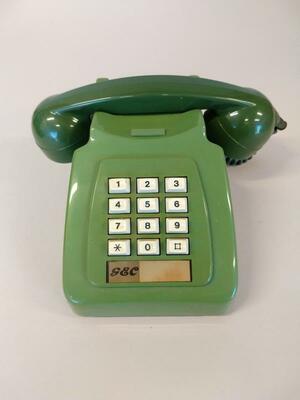Telegraph [Wheatstone Double Needle]
Maker and role
Silver and Company, Manufacturer
Production date
1861-1862
See full details
Object detail
Accession number
1978.1859
Maker
Production period
Description
Wheatstone Double Needle Telegraph No.511. Wooden case. Face plate with galvanometers repainted and redrawn at some stage. Handle of dark (1) and lighter wood (1).
Brief History
The Cooke and Wheatstone needle telegraph is an electric telegraph, patented in 1837. It was developed with varied arrangement of needles, the model with five needles initially being the most successful as the operator didn’t need to learn a code. This double needle model works by receiving magnetic charges which trigger the needles, and as the needles move the operator decodes and transcribes the message.
In 1858, several double needle telegraph units were ordered by the Canterbury Provincial Council from Britain, for use in New Zealand's first public telegraph. By the time the equipment arrived in late 1859 the province was in recession and the equipment remained unused for several years. By the time the line was built, the more modern Morse telegraph was recommended and the line was inaugurated in 1862 with the Wheatstone equipment supplemented with Morse equipment.
MOTAT's double needle telegraph is believed to be one of the units imported by the Canterbury province. Despite not seeing much service, it highlights the rapid development of technologies and the impact of economic changes.
In 1858, several double needle telegraph units were ordered by the Canterbury Provincial Council from Britain, for use in New Zealand's first public telegraph. By the time the equipment arrived in late 1859 the province was in recession and the equipment remained unused for several years. By the time the line was built, the more modern Morse telegraph was recommended and the line was inaugurated in 1862 with the Wheatstone equipment supplemented with Morse equipment.
MOTAT's double needle telegraph is believed to be one of the units imported by the Canterbury province. Despite not seeing much service, it highlights the rapid development of technologies and the impact of economic changes.
Marks
SILVER & CO / MAKERS / LONDON & SILVERTOWN / No 511 Maker's Plate
Media/Materials
Credit Line
Silver and Company. 1861-1862. Telegraph [Wheatstone Double Needle], 1978.1859. The Museum of Transport and Technology (MOTAT).



Public comments
Be the first to comment on this object record.